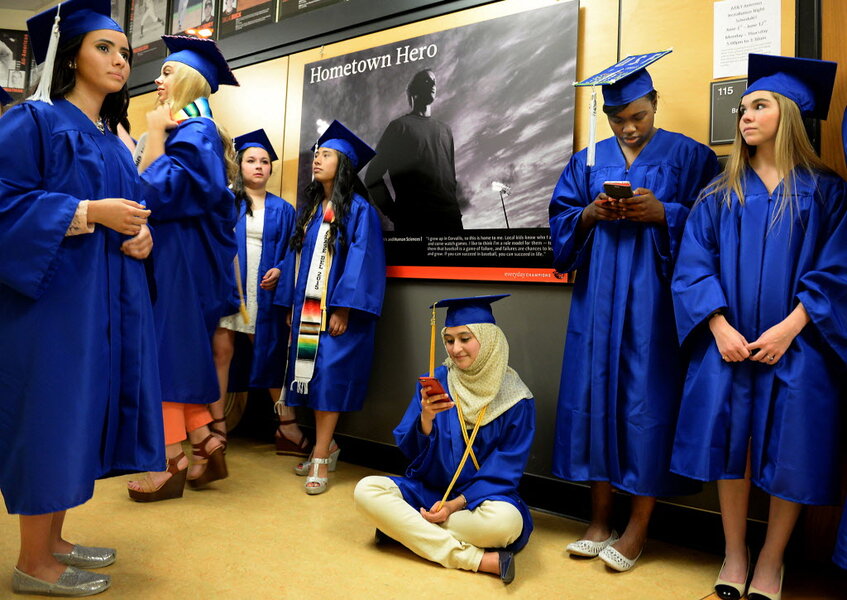Why more American teens succeed
Loading...
For 33 years, ever since the landmark report “A Nation at Risk” put a spotlight on the poor state of public schools, the United States has been on an education-reform kick. On one key measure – which the report stressed – the reforms are now paying off. Last year, the nation’s high school graduation rate hit a record high of 83.2 percent.
The rate is not 100 percent, and in the effort to raise math and reading scores, progress remains slow. Still, the success in graduation rates is significant, not only in its steady rise but because it is happening among all regions and races. The fastest increase last year, in fact, was among minorities and special-education students, which can only help reduce the “education gap.”
It is difficult to point to the exact causes of this progress. Most experts cite the movement to hold schools accountable for ensuring students gain a basic education. (The latest example is the 2015 federal Every Student Succeeds Act.) In a recent survey by Education Next, Americans gave their local public schools the most favorable rating in the past 10 years. Nearly three-quarters support uniform testing of students.
Other experts cite better parenting skills, the use of learning technology, the rise in charter schools, and expanded early childhood education. Many schools now have better tools to spot kids most at risk of dropping out and then are able to provide support, such as home visits by teachers.
At some point over the past three decades, the focus changed from merely fixing a problem and requiring mere “proficiency” in educational standards to expecting excellence of students. In fact, the latest national goal is not just to raise graduation rates but to make sure more young people are prepared for either college or a career.
Other trends may also account for the graduation success. Teen pregnancy is at an all-time low. Drug use and violent crime is down among teenagers. Binge drinking among 12th-graders is at its lowest since surveys began 40 years ago.
Teenagers themselves deserve as much credit as educational reforms. A new survey by the Barna Group, for example, found a large majority of teens volunteer at least once every few months. In one intriguing study, written up in the new book “Coming of Age in the Other America,” researchers tracked 150 African-American youth in Baltimore to find out why some succeeded and others did not. They found that teens need not only aspiration but inspiration.
“About half of our youth did in fact discover a ‘life raft,’ an ‘outlet,’ a ‘passion in life’ that seemed to spark renewed effort,” the researchers write. The teens wrote poetry, raised pigeons, or customized cars. Such “identity projects” helped lift students out of negative family or community life and connected them to clergy, coaches, and teachers. They developed the grit to “beat the streets.”
And along the way, those that found a strong identity also earned a high school diploma.







